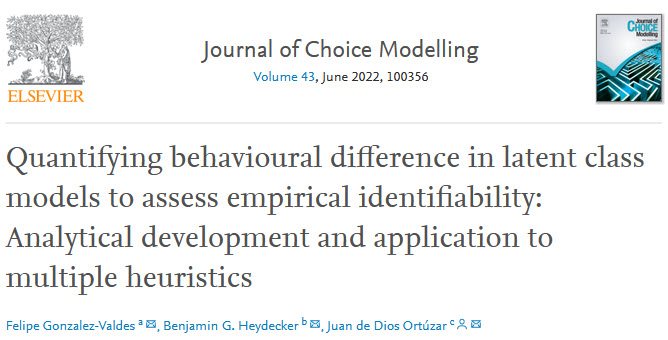FelipeGonzalez-ValdesaBenjamin G.HeydeckerbJuan de DiosOrtúzarc
https://doi.org/10.1016/j.jocm.2022.100356
Abstract
Latent class (LC) models have been used for decades. In some cases, models of this kind have exhibited difficulties in identifying distinct classes. Identifiability is key to determining the presence or absence of the different population cohorts represented by the latent classes. Theoretical identifiability addresses this issue in general, but no empirical identifiability analysis of this kind of model has been performed previously. Here, we analyse the theoretical properties of LC models to establish necessary conditions on the classes to be identifiable jointly. We then, establish a measure of behavioural difference and relate it to empirical identifiability; this measure highlights factors that are crucial for identifiability. We show how these factors affect identifiability through simulation experiments in which classes are known, and test elements such as the proportion of individuals belonging to each latent class, different correlation structures and sample sizes. In our experiments, each latent class corresponds to a different choice heuristic. We present a graphical diagnostic that supports the measure of behavioural difference that promotes identifiability and provide examples of model non-identifiability, partial identifiability, and strong identifiability. We conclude by discussing how non-identifiability can be detected and understood in ways that will inform survey design and analysis.
